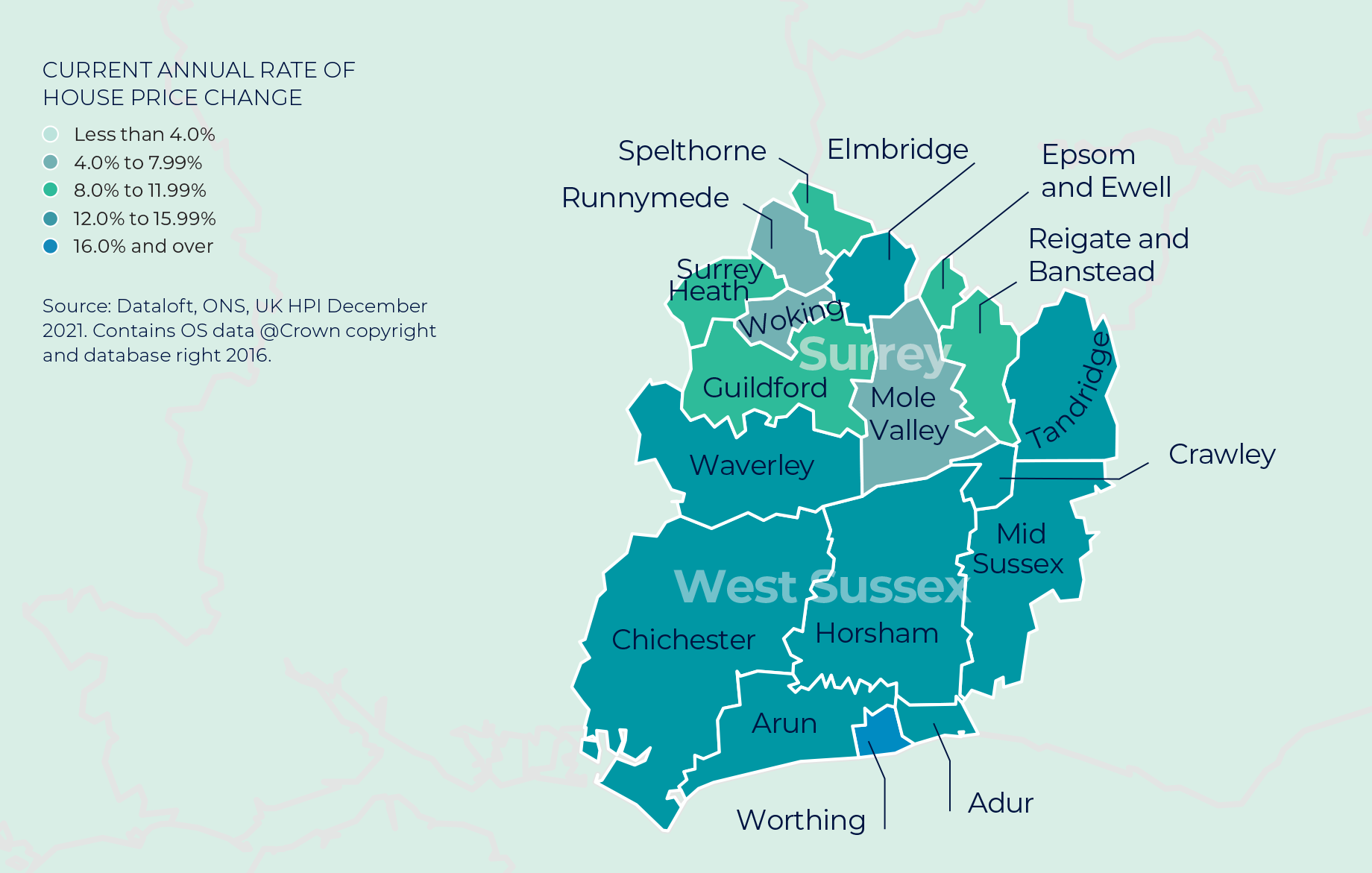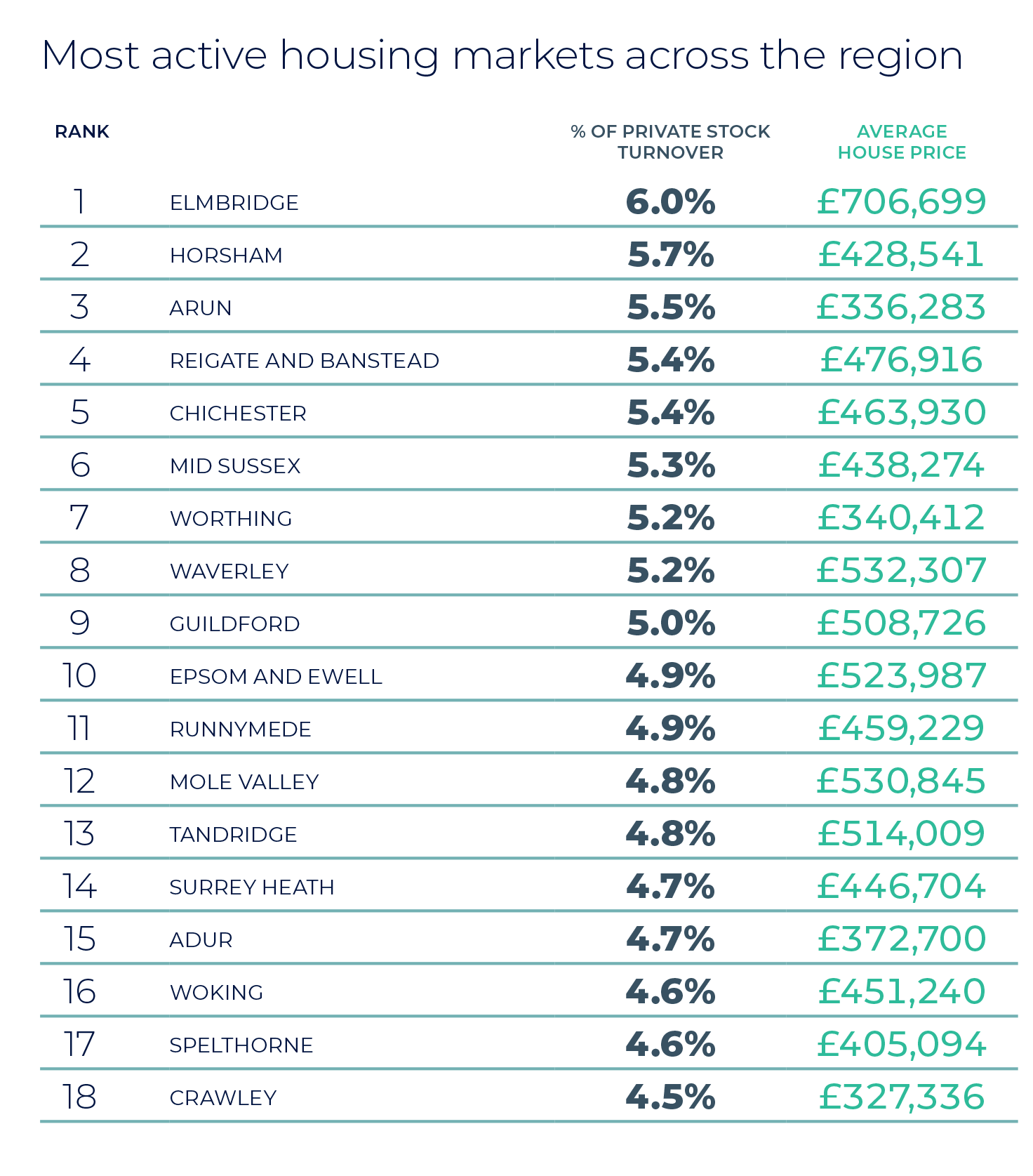Posted on: Tuesday, April 5, 2022
Standing firm
2022 has started strongly. Sales volumes in January are predicted to be 10% higher than their long- term (2012–2021) average and, except for a year ago, are the strongest since 2007 (Dataloft, HMRC). Buyer demand remains steadfast, up 16% year-on-year (Rightmove). Property price growth continues to be sustained; annual price growth in the year to January was at its strongest in over 15 years (Nationwide). Rightmove reported the biggest monthly jump in the asking price of a newly listed property since 1994 and when asked, the majority of agents are still expecting price growth over the next three- and 12-month period.
At 12.6%, annual property price growth in the South East is considerably stronger than the 5.1% evident a year ago. The pandemic ‘search for space’ is still playing out in many markets, with prices for detached homes currently seeing the strongest growth of all property types; average prices are up over 16% year-on-year. With office returns and hybrid working now in place, there has been renewed interest in apartment living, and many town and citycentre locations are seeing a rise in buyer demand.

Winds of change
Although the quantity of property for sale remains low, with the Royal Institution of Chartered Surveyors (RICS) reporting stock levels per agent at a record low in January (barring the market closure in spring 2020), there are signs of change. New listings in January rose 11% year-on-year, with Rightmove noting a substantial rise in home valuation requests – an indication that many are looking to sell before they buy in current conditions. These should feed through to agents’ books over the coming months. Historically, March is the strongest time to sell, with the highest number of buyer enquiries per property for sale.
Elmbridge and Horsham proved the fastest-moving markets in the Southern Home Counties over the course of 2021, with more than one in every 20 privately owned properties estimated to have changed hands. 2022 has started with momentum At 44 days, the average time taken to sell a property in the South East is over three weeks quicker than a year ago.

Sunshine and showers
Across the UK, governments are announcing their plans for ‘living with COVID’ and hybrid working is bedding in. With economic growth of 7.5% over the course of 2021, the UK economy is close to its pre-pandemic level. However, consumer confidence remains on edge due to the rising cost of living. Increases in the cost of food and clothing, along with rising fuel and energy prices, look set to squeeze many household incomes. Savings made during the pandemic might provide a cushion in the short term, and while interest rates may well rise from the current 0.5%, they remain low by historic standards.
Properties for sale in the Southern Home Counties
With its wonderfully large gardens and stately double fronted facade, this spacious detached family home combines the period charm of sweeping bow windows and a magnificent entrance hall with an exceptional contemporary interior design scheme. Beautifully large reception rooms give a choice of places to relax and entertain, and five superb double bedrooms include a stylish principal suite with a dressing room and deluxe en suite shower room. Double length garaging and a large private driveway supply parking for numerous vehicles, and the Kettlewell Hill location is perfect for highly regarded local schools.
This attractive Family Home is located towards the end of a small, private cul de sac and is set back from the road with a generous Driveway providing off street parking. The 25 ft orangery is a particular feature of this beautiful home with plenty of space for sofas and a dining table, which makes it a great space for entertaining. There are windows on all sides, making the most of the west facing garden and a large lantern that floods the room with natural light.
Worthing, West Sussex, 4 bedrooms
Situated in the highly desirable and picturesque village of South Ferring, this stunning family home has everything you could ask for and more! Presented in immaculate order throughout, this substantial detached residence offers plentiful and flexible accommodation split across two floors, with bedrooms both on the ground and first floors. The fantastic outside space is only enhanced by the addition of a thatch roof seating area nestled in the corner of the garden. To the front there is ample parking on the driveway which leads to the detached double garage.
Contact us
As property prices and demand continue to rise, sell your property with experts in the property industry this spring. Contact your local Guild Member today.







